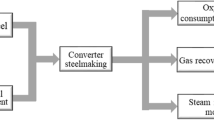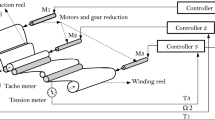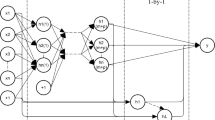Abstract
In the last decade, a wide range of machine learning approaches were proposed and experimented to model highly nonlinear manufacturing processes. However, improving the performance of such models is challenging due to the complexity and high dimensionality of the manufacturing processes in general. In this paper, we propose bidirectional echo state reservoir networks (Bi-ESNs) trained using support vector machine privileged information method (SVM\(+\)) to model a winding machine process. The proposed model will be applied, tested and compared to reported models in the literature such as classical ESN with linear regression, ESN with a linear SVM readout, genetic programming, feedfoward neural network with backpropagation, radial basis function network, adaptive neural fuzzy inference system and local linear wavelet neural network. The developed results show that Bi-ESNs trained with SVM\(+\) are promising. It was able to provide better generalization performance compared to other models.













Similar content being viewed by others
Notes
A hyperplane with maximal normalized margin.
References
Abbasi Nozari H, Dehghan Banadaki H, Mokhtare M, Hekmati Vahed S (2012) Intelligent non-linear modelling of an industrial winding process using recurrent local linear neuro-fuzzy networks. J Zhejiang Univ Sci C 13:403–412
Al-Hiary H, Sheta A, Ayesh A (2008) Identification of a chemical process reactor using soft computing techniques. In: Proceedings of the 2008 international conference on fuzzy systems (FUZZ2008) within the 2008 IEEE world congress on computational intelligence (WCCI2008), Hong Kong, 1–6 June, pp 845–653
Babinec S, Pospíchal J (2011) modular state space of echo state neural network in time series prediction. Comput Inform 30:321–334
Bastogne T, Noura H, Sibille P, Richard A (1998) Multivariable identification of a winding process by subspace methods for tension control. Control Eng Pract 6(9):1077–1088
Bengio Y, Simard P, Frasconi P (1994) Learning long-term dependencies with gradient descent is difficult. IEEE Trans Neural Netw 5:157–166
Braatz R, Ogunnaike B, Featherstone A (1996) Identification, estimation and control of sheet and film processes. In: Proceedings of the 13th IFAC world congress. San Francisco, CA, pp 319–324
Buesing L, Schrauwen B, Legenstein R (2010) Connectivity, dynamics and memory in reservoir computing with binary and analog neurons. Neural Comput 22:1272–1311
Chan WC, Cheung KC, Harris CJ (2001) On the modelling of nonlinear dynamic system using support vector neural networks. Eng. Appl. Artif. Intell. 14:105–113
Chen Y, Yang B, Dong J (2006) Time-series prediction using a local linear wavelet neural network. Neurocomputing 69:449–456
Cristianini N, Shawe-Taylor J (2000) An introduction to support vector machines: and other kernel-based learning methods. Cambridge University Press, New York
Du H, Zhang N (2008) Time series prediction using evolving radial basis function networks with new encoding scheme. Neurocomputing 71:1388–1400
Ebler N, Arnason R, Michaelis G, D’Sa N (1993) Tension control: dancer rolls or load cells. IEEE Trans Ind Appl 29(4):727–739
Faris H, Sheta A, Öznergiz E (2013) Modelling hot rolling manufacturing process using soft computing techniques. Int J Comput Integr Manuf 26(8):762–771
Faris H, Sheta AF, Öznergiz E (2016) MGP-CC: a hybrid multigene GP-cuckoo search method for hot rolling manufacture process modeling. Syst Sci Control Eng 4:39–49
Faris H, Sheta AF (2016) A comparison between parametric and non-parametric soft computing approaches to model the temperature of a metal cutting tool. Int J Comput Integr Manuf 29(1):64–75
Fukushima H, Kim T-H, Sugie T (2007) Brief paper: adaptive model predictive control for a class of constrained linear systems based on the comparison model. Automatica 43:301–308
Good J, Roisum DR (2008) Machines, mechanics and measurements. DEStech Publication, Lancaster
Hailiang H, Zhong W, Xiaohong N, Jing S (2015) Robust decentralized control of web-winding systems without tension sensor. In: Proceedings of the 2015 34th Chinese control conference (CCC), pp 8850–8854, July 2015
Haykin S (1998) Neural networks: a comprehensive foundation, 2nd edn. Prentice Hall PTR, Upper Saddle River
Hoshino I, Maekawa Y, Fujimoto T, Kimura H (1988) Observer-based multivariable control of the aluminum cold tandem mill. Automatica 24(6):741–754
Hussian A, Sheta A, Abdelwahab A (2001) Modeling of a winding machine using non-parametric neural network model. In: WSEAS international conference on scientific computation and soft computing. Athens, Greece, pp 528–553
Hussian A, Sheta A, Kamel M, Telbany M, Abdelwahab A (2000) Modeling of a winding machine using genetic programming. In: Proceedings of the congress on evolutionary computation (CEC2000), vol 82, pp 398–402
Inoue Y, Takanashi K, Miyazawa N, Hyuga Y (1984) Management and control systems in the steel industry. Comput Ind 5(2):143–152 (Special Issue: Computers in Japanese Industry)
Isobe T (1970) Automatic control in the iron and steel industry. Automatica 6(1):111–121
Jaeger H (2001) The echo state approach to analysing and training recurrent neural networks. Technical report GMD report 148, German National Research Center for Information Technology
Jang J-S (1993) ANFIS: adaptive-network-based fuzzy inference system. IEEE Trans Syst Man Cybern 23:665–685
Jian W, Xu Z, Minghong W, Dehong D (2007) Research on spindle drive control system of high speed winding machine. In: Proceedings of the 8th international conference on electronic measurement and instruments (ICEMI’07), pp 473–477, Aug 2007
Kara Y, Acar Boyacioglu M, Baykan OK (2011) Predicting direction of stock price index movement using artificial neural networks and support vector machines. Expert Syst Appl 38:5311–5319
Lukoševičius M, Jaeger H (2009) Reservoir computing approaches to recurrent neural network training. Comput Sci Rev 3:127–149
Lukoševičius M, Jaeger H, Schrauwen B (2012) Reservoir computing trends. KI - Künstliche Intelligenz, pp 1–7, 05/2012
Lukoševičius M, Marozas V (2014) Noninvasive fetal qrs detection using an echo state network and dynamic programming. Physiol Meas 35:1685
Mo W, Wang M, Lin J-S, Zan H, Sun G (2014) Control system based on plc for winding machine. In: Proceedings of the 2014 international symposium on computer, consumer and control (IS3C), pp 74–77, June 2014
Muller K, Smola A, Ratsch G, Scholkopf B, kohlmorgen J, Vapnik V (1997) Predicting rime series with support vector machines. In: Proceedings of the 7th international conference on artificial neural networks (ICANN’97), pp 999–1004
Nozari HA, Banadaki HD, Mokhtare M, Vahed SH (2012) Intelligent non-linear modelling of an industrial winding process using recurrent local linear neuro-fuzzy networks. J Zhejiang Univ Sci C 13(6):403–412
Parant F, Coeffier C, Iung C (1992) Modeling of a web tension in a continuous annealing line. Iron and Steel Engineer, Pittsburgh
Rodan A, Tiňo P (2010) Simple deterministically constructed recurrent neural networks. In: Fyfe C et al (eds) Intelligent data engineering and automated learning—IDEAL 2010. Springer, pp 267–274
Rodan A, Tino P (2011) Negatively correlated echo state networks. In: ESANN, Citeseer
Rumelhart DE, Hinton GE, Williams RJ (1988) Neurocomputing: foundations of research. Ch. Learning internal representations by error propagation. MIT Press, Cambridge, pp 673–695
Scardapane S, Wang D, Panella M (2015) A decentralized training algorithm for echo state networks in distributed big data applications. Neural Netw 78:65–74
Sheta AF, Faris H, Öznergiz E (2014) Improving production quality of a hot-rolling industrial process via genetic programming model. Int J Comput Appl Technol 49:239–250
Sheta A, Ahmed SE, Faris H (2015) A comparison between regression, artificial neural networks and support vector machines for predicting stock market index. Int J Adv Res Artif Intell IJARAI 4(7):55–63
Sheta A, Al-Hiary H, Braik M (2009) Identification and model predictive controller design of the Tennessee Eastman chemical process using ANN. In: Proceedings of the 2009 international conference on artificial intelligence (ICAI’09), July 13–16, USA, vol 1, pp 25–31
Sievers L, Balas M, von Flotow A (1988) Modeling of web conveyance systems for multivariable control. IEEE Trans Autom Control 33:524–531
Sievers L, Balas M, Flotow AV (1988) Modeling of web conveyance systems for multivariable control. IEEE Trans Autom Control 33(6):524–531
Smola AJ, Scholkopf B (1998) A tutorial on support vector regression. Technical report, Technical report NC2-TR-1998-030, University of London, Royal Holloway
Tiňo P, Rodan A (2013) Short term memory in input-driven linear dynamical systems. Neurocomputing 112:58–63
Vapnik V (1995) The nature of statistical learning theory. Springer, New York
Vapnik VN (1999) An overview of statistical learning theory. Trans Neural Netw 10:988–999
Vapnik V, Izmailov R (2015) Learning using privileged information: similarity control and knowledge transfer. J Mach Learn Res 16:2023–2049
Vapnik V, Vashist A (2009) A new learning paradigm: learning using privileged information. Neural Netw 22(5–6):544–557
Walker N, Wyatt-Mair G (1995) Sensor signal validation using analytical redundancy for an aluminum cold rolling mill. Control Eng Pract 3(6):753–760
Wang WJ, Xu ZB, Lu WZ (2003) Determination of the spread parameter in the gaussian kernel for classification and regression. Neurocomputing 55:643–663
Wang X, Yan Heshan (2015) Optimizing the echo state network with a binary particle swarm optimization algorithm. Knowl Based Syst 86:09
Wei C-H, Wu C-H (2004) A simulator of winding machine controller using LabView environment. In: Control, automation, robotics and vision conference, 2004. ICARCV 2004 8th vol 3, pp 2105–2110, Dec 2004
Zhu GQ, Liu SR, Yu JS (2002) Support vector machine and its applications to function approximation. J East China Univ Sci Technol 5:555–559
Acknowledgments
The data set used in this research work was collected as part of a project supervised by Dr. M. Kamel at the Aluminum factory in Egypt and analyzed by Dr. Aboabbas Hussain.
Author information
Authors and Affiliations
Corresponding author
Ethics declarations
Conflict of interest
Ali Rodan declares that he has no conflict of interest. Alaa F. Sheta declares that he has no conflict of interest. Hossam Faris declares that he has no conflict of interest.
Ethical approval
This article does not contain any studies with human participants or animals performed by any of the authors.
Additional information
Communicated by V. Loia.
Rights and permissions
About this article
Cite this article
Rodan, A., Sheta, A.F. & Faris, H. Bidirectional reservoir networks trained using SVM\(+\) privileged information for manufacturing process modeling. Soft Comput 21, 6811–6824 (2017). https://doi.org/10.1007/s00500-016-2232-9
Published:
Issue Date:
DOI: https://doi.org/10.1007/s00500-016-2232-9




